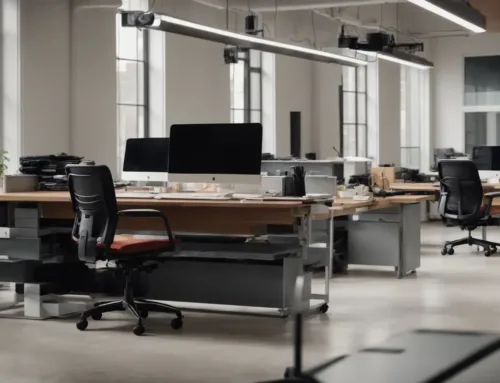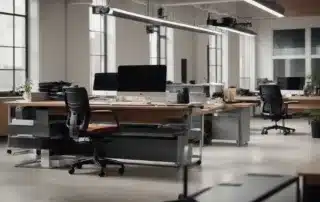Noise-induced hearing loss (NIHL) is not just a medical concern but a significant occupational hazard. This irreversible hearing condition arises primarily from prolonged exposure to loud noises in professional settings. With NIHL being the predominant occupational illness in the U.S., it’s alarming to note that it affects approximately 22 million workers every year. Moreover, the unemployment rate among those with hearing conditions is concerning, emphasizing the need for workplace accommodations.
Professions Most Vulnerable to Hearing Loss and Their Protective Measures:
Construction Workers:
Exposure: Power tools, jackhammers, heavy machinery.
Safety Measures: Utilize noise-cancelling headphones, schedule regular breaks, ensure machinery undergoes routine maintenance to minimize noise, and conduct periodic noise assessments. Hearing protection is vital, especially when using tools like jackhammers.
Manufacturing Workers:
Exposure: Machines like presses, grinders, and conveyors.
Safety Measures: Set up sound barriers or enclosures around particularly loud machinery, provide earplugs or earmuffs to workers, and rotate job roles to limit continuous noise exposure.
Military Personnel:
Exposure: Gunfire, explosions, aircraft, and heavy artillery.
Safety Measures: Offer specialized ear protection during both training and active duty, conduct regular hearing tests, and provide training on the importance of hearing protection.
Truck Drivers and Ambulance Drivers:
Exposure: Engine noise, wind, traffic, and loading/unloading activities.
Safety Measures: Invest in noise-reducing cabin insulation, wear ear protection during extended drives, and ensure regular vehicle maintenance to reduce unnecessary noise.
Musicians:
Exposure: Instruments, sound systems, and crowd noise.
Safety Measures: Use ear monitors to control sound levels, take extended breaks between sets, and consider acoustic treatments for rehearsal spaces.
Understanding the Nuances of NIHL:
NIHL can manifest in a myriad of ways. From struggling to understand speech in noisy environments to experiencing tinnitus or a constant ringing in the ears, the symptoms can be varied. The insidious nature of this condition means that many individuals remain oblivious to their deteriorating hearing until significant damage has occurred. However, with awareness and proactive measures, the onset of NIHL can be delayed or even prevented:
- Opt for custom-fitted earplugs or earmuffs.
- Advocate for noise reduction initiatives in the workplace.
- Schedule bi-annual hearing tests with a certified audiologist.
- Take breaks from continuous noise exposure.
If you have even the slightest suspicion about potential hearing problems, it’s imperative to consult an audiologist and initiate a dialogue with your employer. They can provide guidance on protective measures, necessary tests, and potential workplace accommodations under the Americans with Disabilities Act.
OSHA’s Comprehensive Role in Combatting NIHL:
The Occupational Safety and Health Administration (OSHA) plays a pivotal role in establishing and enforcing regulations designed to protect workers from NIHL. These guidelines necessitate that employers initiate a comprehensive hearing conservation program if employees are exposed to noise levels of 85 decibels or more over an 8-hour workday. Key components of this program include:
- Comprehensive noise monitoring and mapping.
- Annual audiometric testing and follow-ups.
- Provision of a variety of hearing protection devices.
- Regular preventative training sessions on NIHL risks, latest research, and protective measures.
e3 Occupational Health Solutions: Your Partner in Hearing Safety:
e3 Occupational Health Solutions stands as a premier U.S. equipment distributor dedicated to safety and compliance programs. Our offerings encompass a broad spectrum, from hearing tests and vision screening to pulmonary function and breath alcohol testing.
Our holistic services include:
- Tailored Needs Assessment: Customized recommendations for an employee health program, ensuring alignment with OSHA requirements and best practices.
- Program Creation, Management & Optimization: Efficient data management with our state-of-the-art hearing conservation software.
- Comprehensive Staff Training: Courses designed to ensure your team not only meets regulatory standards but also stays abreast of the latest in testing methodologies and best practices.
- Guaranteed Accurate Results: With equipment sourced, maintained, and calibrated by e3 Occupational Health Solutions, you can be confident in the accuracy and reliability of your results.
For a deeper dive into our extensive offerings and to understand how we can assist your organization, please visit: e3occupational.com.







